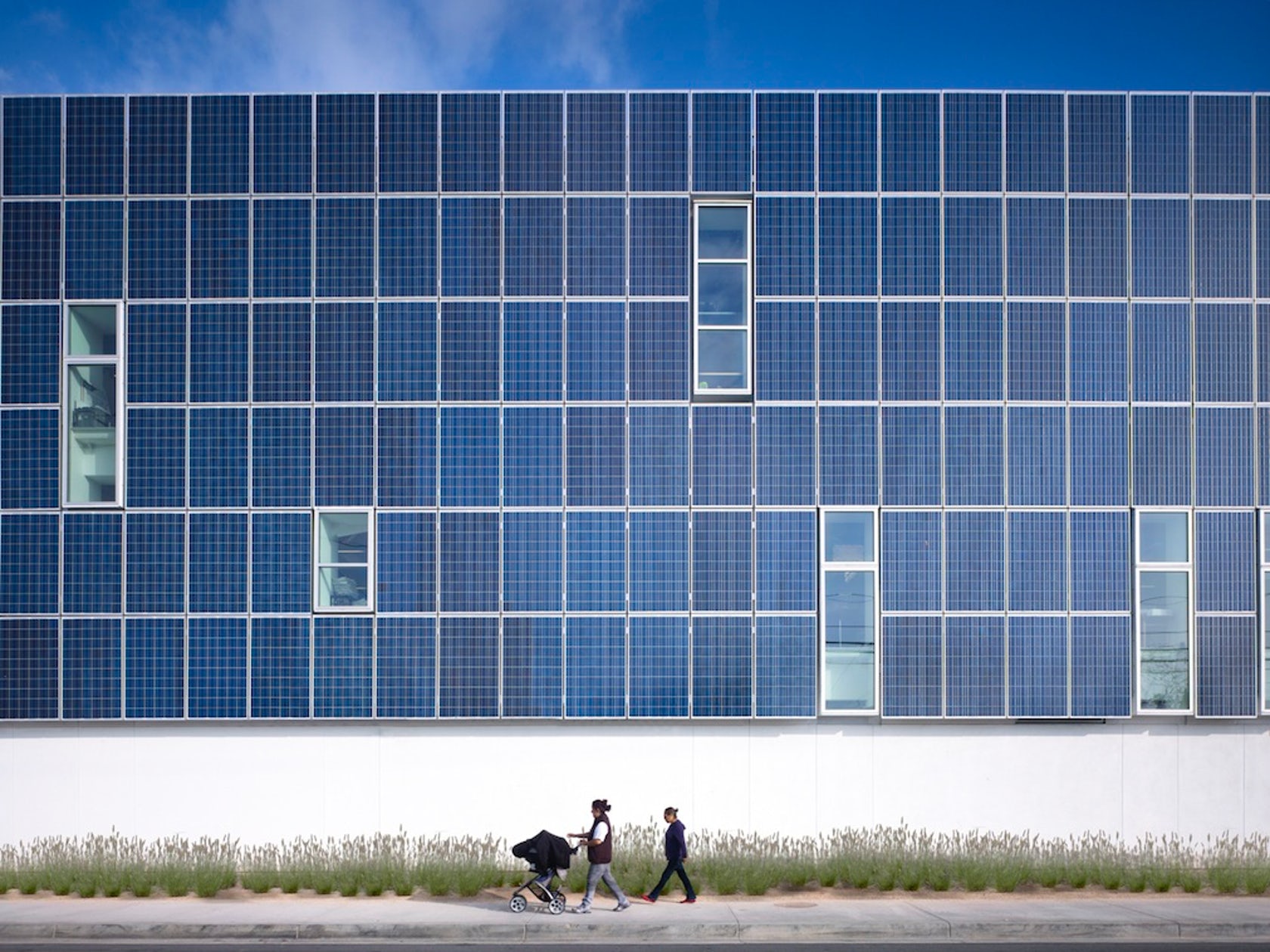Architects: Want to have your project featured? Showcase your work through Architizer and sign up for our inspirational newsletter.
In 1994, Thomas Keller transformed a former laundromat in Yountville, California, into what is consider by many to be the finest dining establishment in the world, the French Laundry. Located in a historic neighborhood in the heart of Napa Valley, the restaurant became an overnight sensation, attracting guests from around the globe who wait months for a table in its cozy, 60-seat dining room. However, after two decades of serving up three-Michelin-starred dishes in the original landmark building, Chef Keller realized it was time to expand.
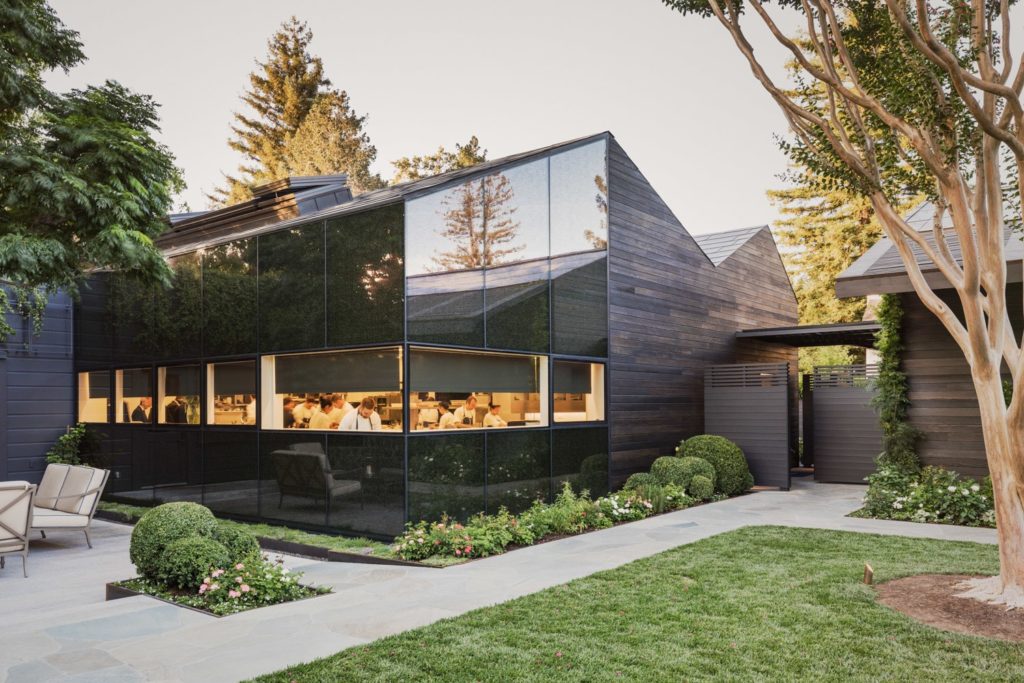
Photo by Michael Grimm; via Snøhetta.
The recently renovated restaurant, designed by the international architecture firm Snøhetta, in collaboration with the California-based firm Envelope A+D, now features a state-of-the-art kitchen, an annex for the kitchen’s ancillary functions and a walled garden for outdoor dining. The architecture, like Chef Keller’s menu, is fusion of avant-garde style and culinary tradition, a recipe which “fosters a meaningful environment for the chefs who work there, setting a stage for cuisine that ignites the senses.”
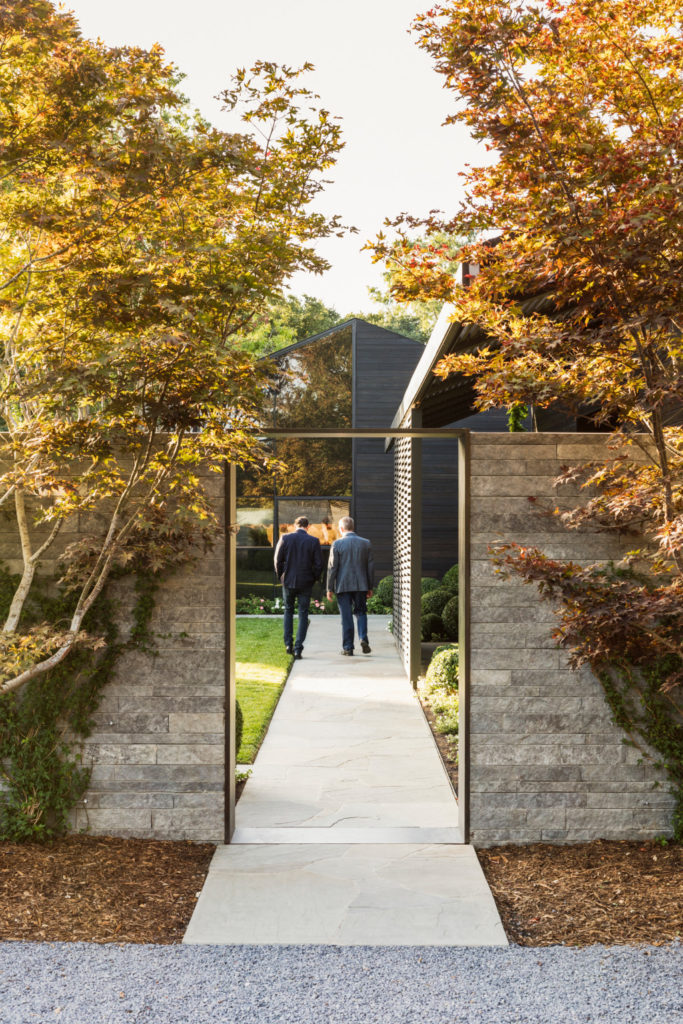
Photo by Michael Grimm; via Snøhetta.
Stone Walls
Manufactured by SBI Building Materials
The entrance to the restaurant is tucked away in the new Arrival Courtyard, a garden space which occupies nearly half of the site. This courtyard is sheltered from the surrounding neighborhood by walls of Whistler Basalt, quarried from the region. Inside, visitors are greeted by a neatly manicured landscape of maples, purple leaf plums, cloud-shaped boxwoods and a gorgeous crepe myrtle tree as old as the restaurant itself.
Search for Architectural Stone Manufacturers
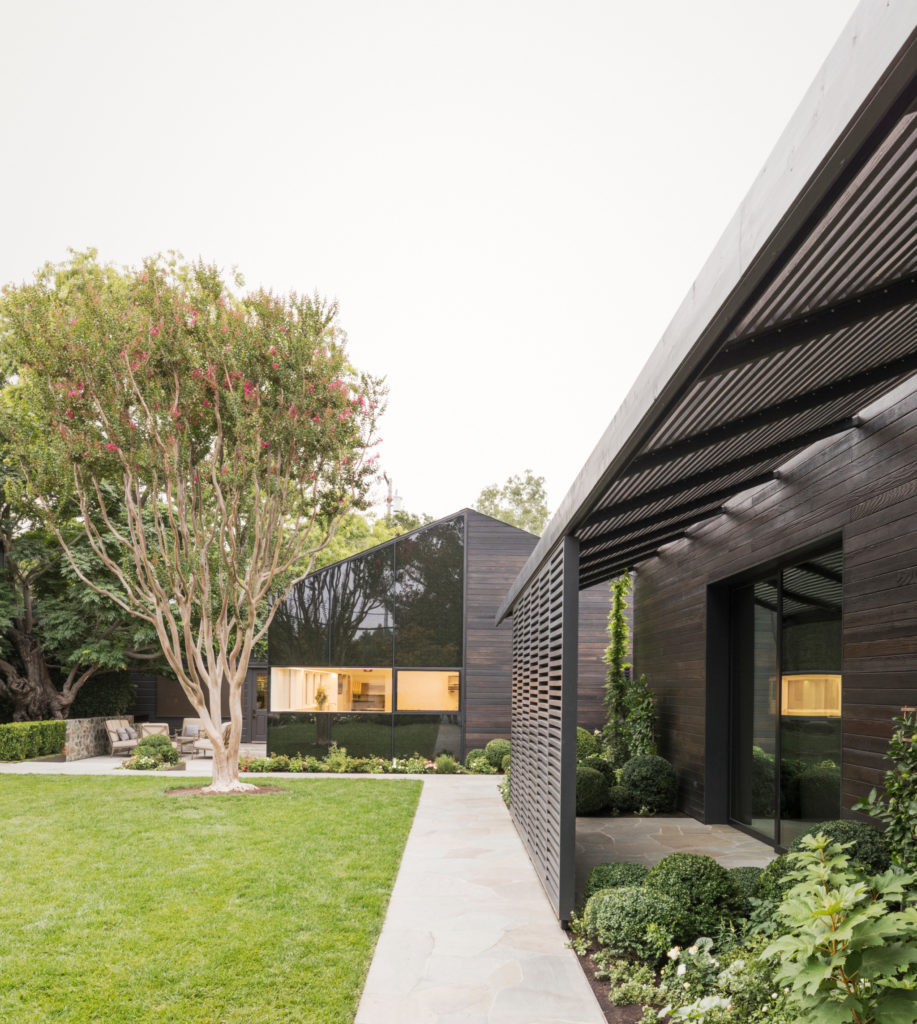
Photo by Michael Grimm; via Snøhetta.
Wood Siding
Manufactured by Delta Millworks
Following the bluestone path to the entrance, visitors first pass by an annex building which houses the restaurant’s 15,000 bottles of wine. Its façades are clad in Western Red Cedar which has been charred, like a perfectly cooked steak, using a Japanese technique known as “shou sugi ban.” In addition to the playful culinary reference, this finish will help preserve the wood for decades.
Search for Wood Siding Manufacturers
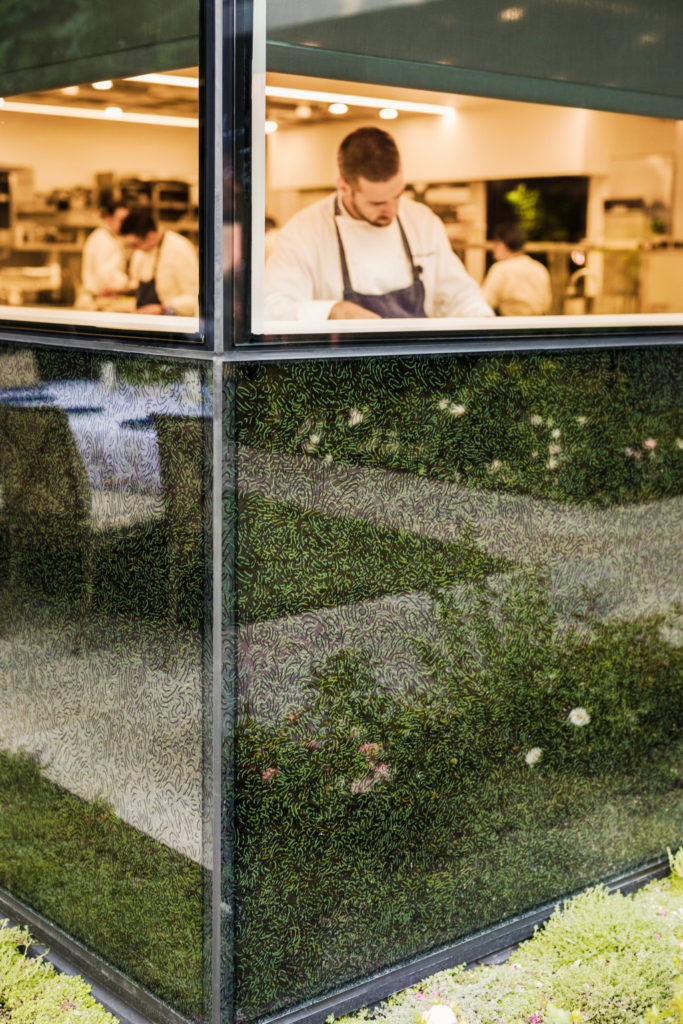
Photo by Michael Grimm; via Snøhetta.
Windows and Glazing
Manufactured by Kawneer and Viracon
Next, the path leads visitors around the corner of the main kitchen building. Here, long ribbon windows are set at eye level, giving prospective diners a glimpse of the kitchen staff in action. In contrast to the textured wood cladding, the corner of this façade is finished in reflective black glass. Its surface has been fritted with an intricate swirling pattern, inspired by the movement of “the chefs’ hands at work.”
Search for Windows Manufacturers
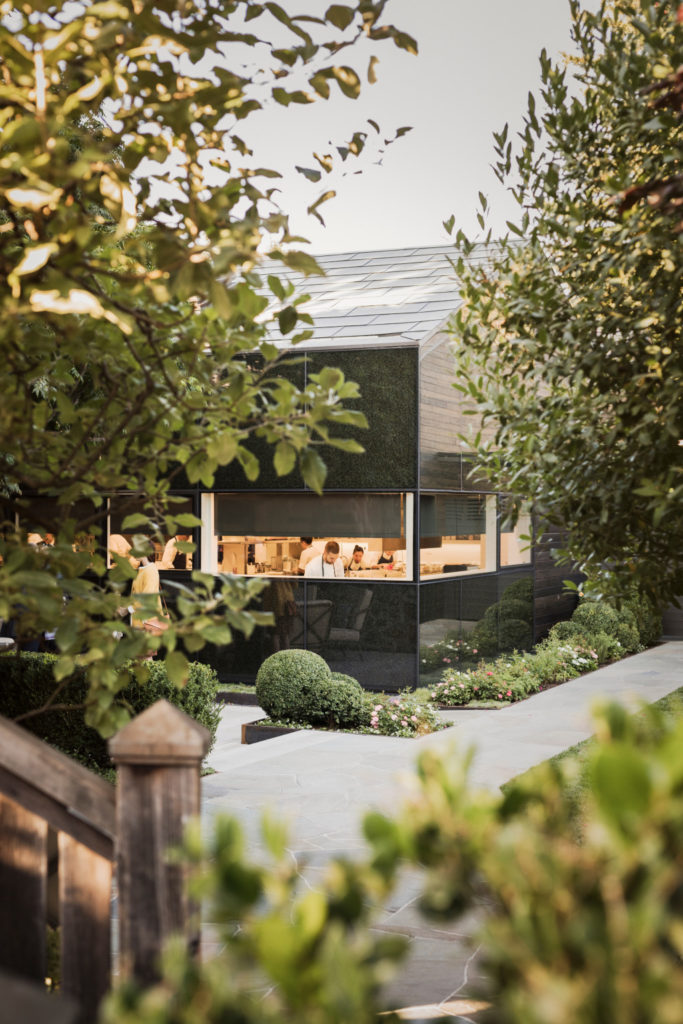
Photo by Michael Grimm; via Snøhetta.
Solar Panels
Manufactured by NRG
Due to the strict height limits of the historic neighborhood, the roofs of the annex and kitchen are low and gabled, like traditional farm buildings. Each roof has been equipped with photovoltaics which supply 50% of the building’s electricity needs. Partially visible from the garden, these panels serve as a subtle reminder of the restaraunt’s commitment to sustainable dining.
Search for Photovoltaics Manufacturers
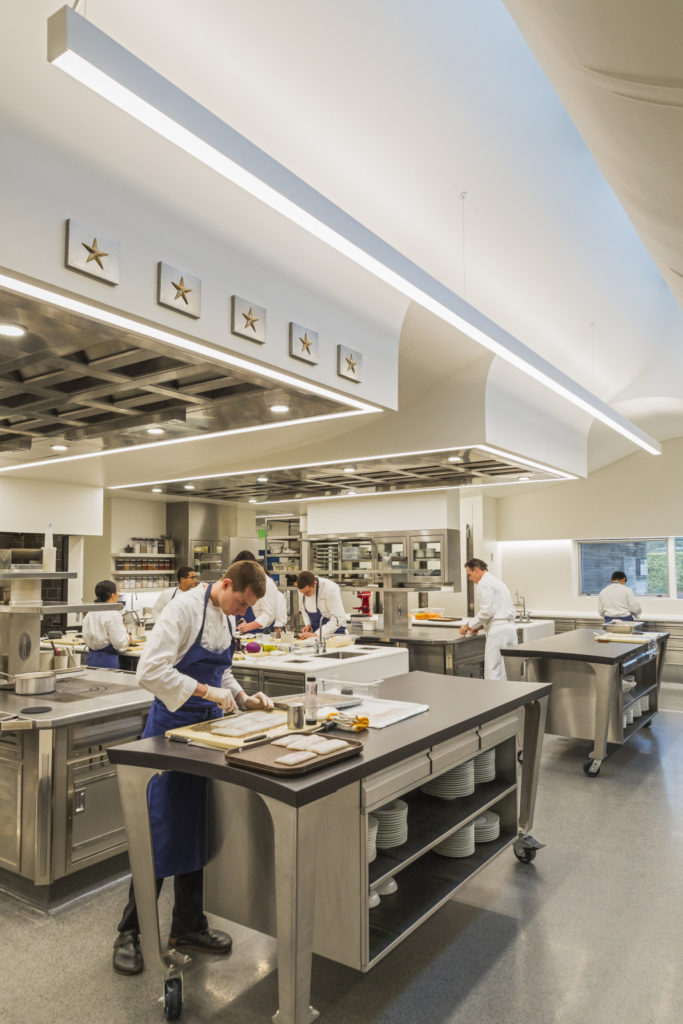
Photo by Michael Grimm; via Snøhetta.
Work Stations
Manufactured by Hestan
While the exterior of the kitchen may appear charming, the interior is all business. Every inch of this 2,000-square-foot space was painstakingly detailed to ensure that the “complex choreography of the kitchen” continues uninterrupted. Custom-designed workstations, for instance, feature concave edges where Chef Keller can “share a calm conversation with his team amidst the commotion and bustle of the kitchen.”
Search for Kitchen Countertop Manufacturers
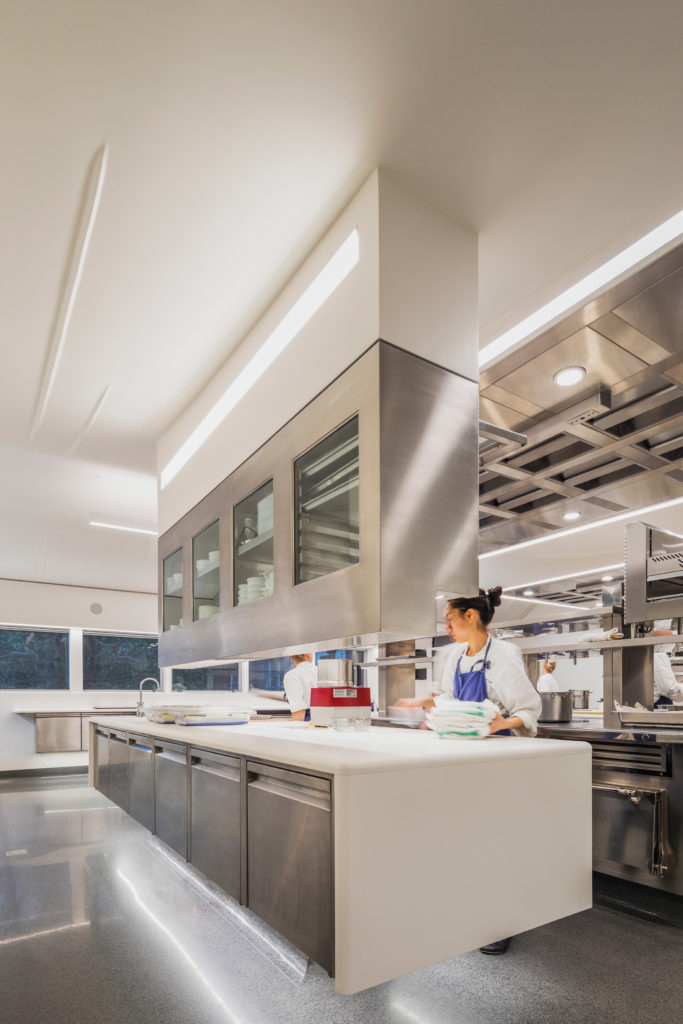
Photo by Michael Grimm; via Snøhetta.
Solid Surfaces
Manufactured by Cosentino
The workstations, countertops, walls and floors are all finished with Dekton, a Quartz-based solid surface which was chosen for its durable, stain proof, heat resistant and anti-bacterial finish. Additionally, because these surfaces are continuous, there are no grout lines to trap food debris or spills, improving the overall cleanliness and safety of the kitchen.
Search for Solid Surface Manufacturers
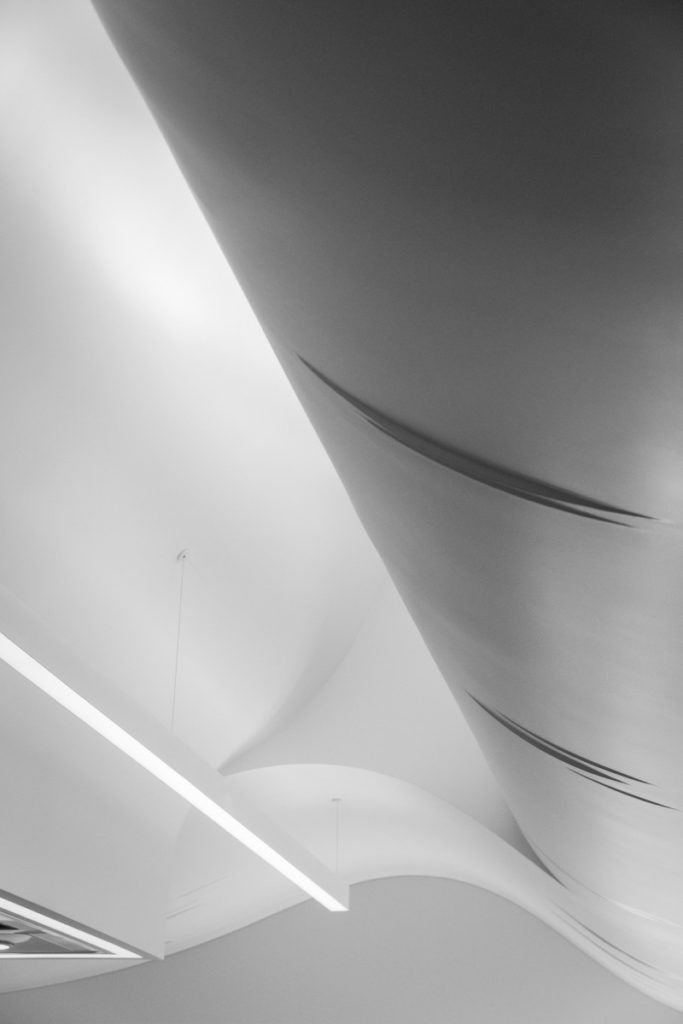
Photo by Michael Grimm; via Snøhetta.
Ventilated Ceilings
Manufactured by GC Products and Halton
Lines of sight and communication have also been enhanced by a sculptural ceiling which conceals a ventilation system, eliminating the need for conventional range hoods. The ceiling is clad in panels glass fiber reinforced gypsum whose curves help improve acoustics while bringing to mind a “tablecloth being gently unfurled.”
Search for Ceiling Manufacturers

Photo by Michael Grimm; via Snøhetta.
LED Lighting
Manufactured by Zumtobel
The dramatic swoops of the ceiling culminate in large skylights which flood the kitchen with natural light. Supplemental lighting is provided by linear LED fixtures, known as SLOTLIGHTs, which are recessed above the ranges and suspended over the workstations. The brightness and color temperature of this lighting can be calibrated remotely, ensuring that the food looks just as good in the kitchen as it will in the dining room.
Search for LED Lighting Manufacturers
Architects: Want to have your project featured? Showcase your work through Architizer and sign up for our inspirational newsletter.






 The French Laundry
The French Laundry 
